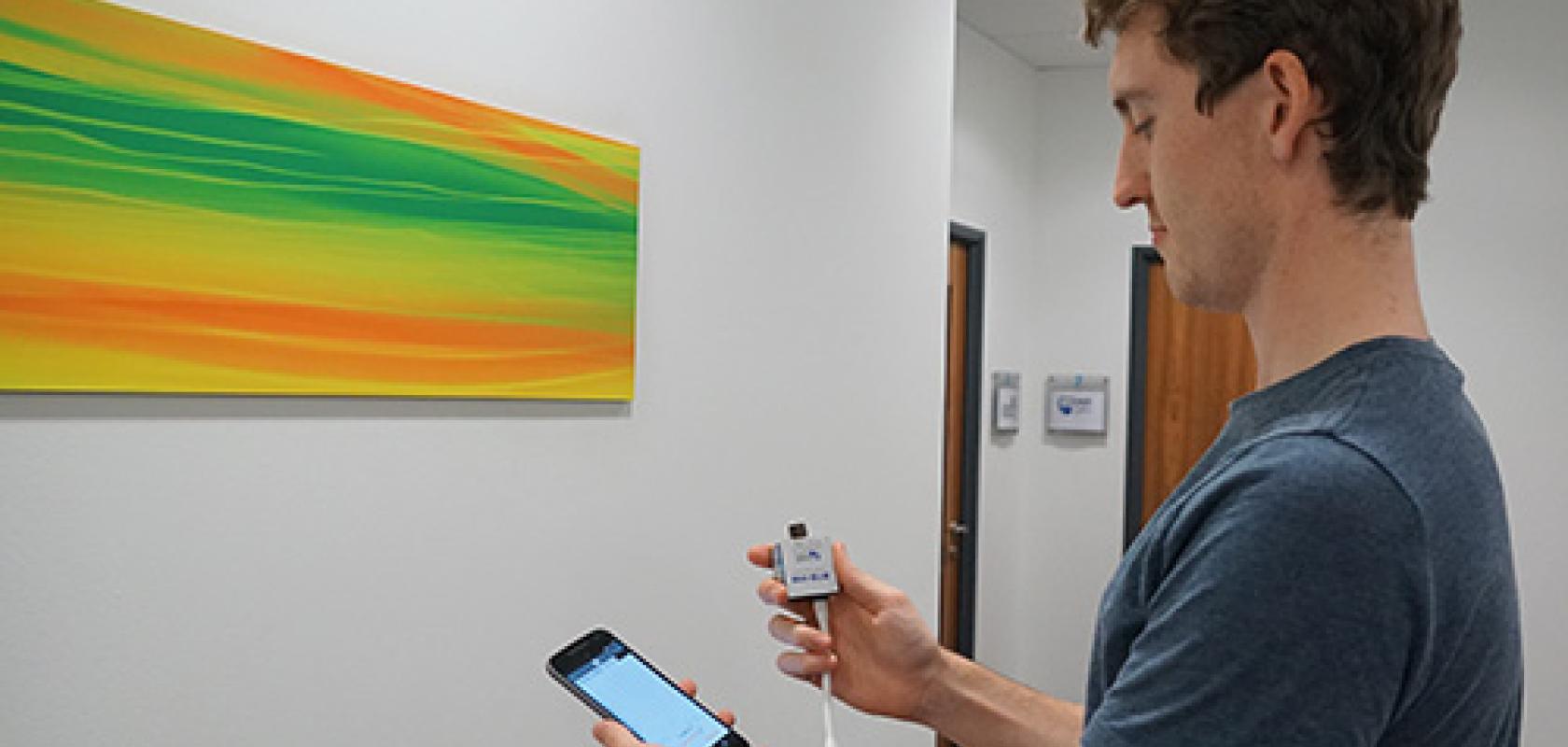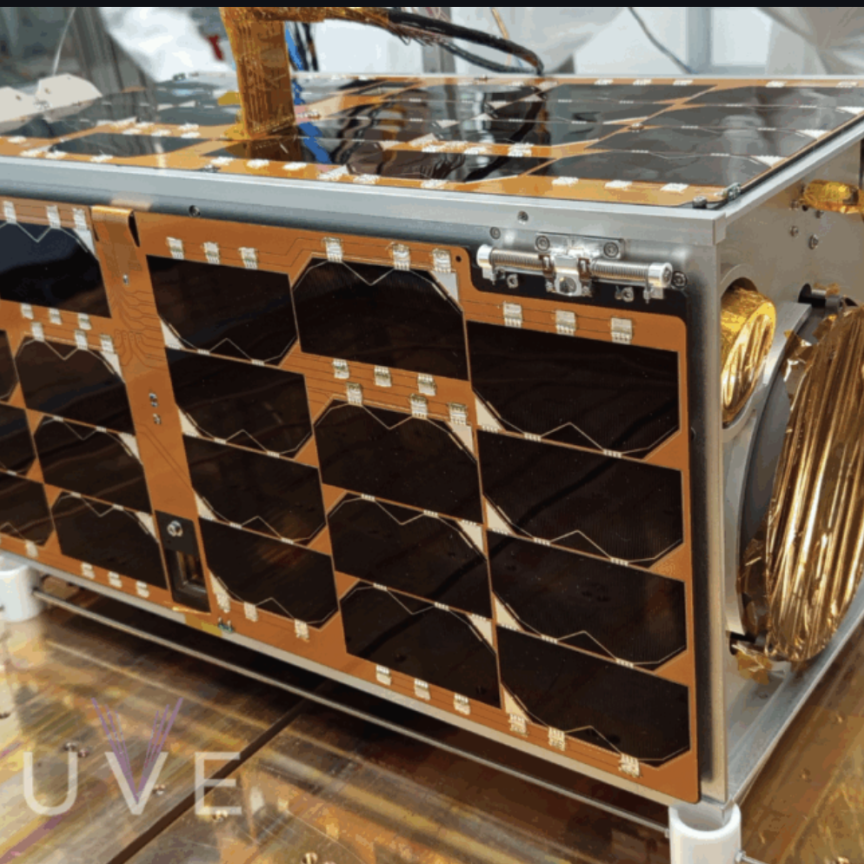Thanks to their long lifetimes, high energy-efficiencies and excellent colour rendering index, light emitting diodes (LEDs) are replacing incandescent lamps in an increasing number of applications.
One sector where LEDs are not only acting as replacements for conventional light sources but helping to advance a whole industry is in horticulture, where LEDs are being used to increase plant growth by up to 40 per cent through the delivery of unique compositions of light.
Here, spectroscopy systems are vital for not only ensuring that the correct mix of light, or ‘light recipe’, is being delivered, but for allowing horticulturists and farmers to monitor their lighting systems, even though they are not the typical spectroscopy user.
Spectral saturation
Plant growth can be boosted by up to 40 per cent with the right wavelengths of light. Farmers and horticulturists are using red, white and blue LEDs to deliver optimal compositions of light to crops on large scales and, thanks to their energy-efficiency, horticultural LEDs have become a fast-growing market. Spectrometers are being used to ensure that optimal wavelengths of light are delivered at the right intensities to stimulate plant growth.
According to Henry Langston, general manager for UK and Ireland at Ocean Optics, the company has been involved in providing spectrometry equipment for giant greenhouses that use both LEDs and natural sunlight to stimulate plant growth. ‘This allows horticulturists to turn on LED lights to optimise plant growth by “topping up” the natural sunlight,’ he said. ‘This can save energy, as the LEDs can be turned off when they’re not adding anything to growth.’
Plants have a saturation point where they can’t absorb any more energy, and spectrometers play a role in managing the light input. ‘The sunlight can be measured using a spectrometer, along with the artificial light coming from the LEDs,’ explained Langston. The plant can also be analysed for chlorophyll absorbance. ‘You can then see how much light is being turned into energy by measuring the difference between what’s coming in and what’s being absorbed by the plant,’ he added.
By monitoring light input with spectroscopy, horticulturists are able to predict and regulate growing cycles. ‘Rather than having to rely on natural sunlight and not know whether produce will ripen over five days or 10, customers can be told exactly when they’ll receive their order. It really improves the efficiency of the whole fresh produce supply chain,’ Langston said.
Ocean Optics supplies a range of spectrometers for horticultural applications. The company is developing a new handheld spectroscopy system that uses its STS micro spectrometer and works alongside an android app. The system measures 42 x 42mm and can fit in a pocket. The device, currently still in beta testing, measures the full spectrum along with parameters such as lux, colour temperature and colour changes. ‘We are also developing it to also measure attributes and indexes that are specific to the horticulture industry, such as PAR,’ said Langston.
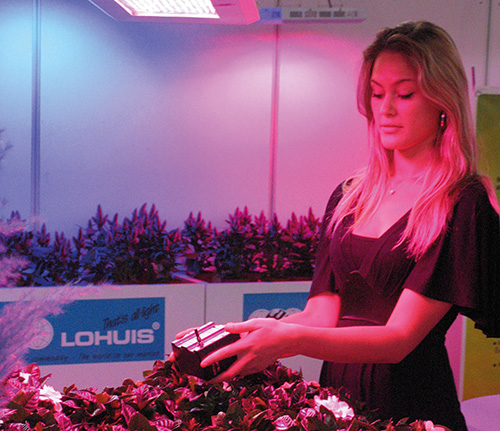
Handheld spectroscopy systems provide an easy, portable way for horticulturalists to check that their LED lighting systems are delivering the correct light recipes
The photosynthetically active radiation (PAR) region refers to the spectral range between 400nm and 700nm that plants respond to when photosynthesising. ‘The PAR index was originally developed as a very simple ratio of two wavebands that only required two photodiodes to measure,’ explained Langston. ‘Now people understand the rich information that can be obtained from spectra, which tells us a lot more about what’s going on, rather than providing a crude approximation.’ While PAR is still used as a measurement within horticulture, a greater depth of spectral information can now be obtained via spectrometry. LED systems can be measured through their total amount of optical power (lux), irradiance at each wavelength (microwatts/cm2/nm), correlated colour temperature, colour co-ordinates, colour rendering, absolute colour and difference in colour.
Langston commented: ‘Taking spectroscopy out of the lab and into the hands of non-experts is a huge driver for spectrometry technology.’ Equipment such as Ocean Optics’ new handheld device gives horticulturists a practical way to monitor the emission spectrum of LEDs over large areas, allowing them to correlate growth patterns of all their produce with illumination spectra.
Ocean Optics’ crossed Czerny-Turner based system designs are able to measure a large range of wavelengths concurrently, making them ideal for taking snapshots out in the field. According to Langston, field-based designs also need to be very rugged and robust, and should contain no moving parts. The company has recently increased the practicality of its field-based spectrometers with its most recent system, the Ocean-FX, by adding on-board battery packs and WiFi capabilities, increasing the portability of the device and ease of data transfer when taking measurements.
Spectrometers are not only used out in the field within horticulture, but also across the entire production chain of horticultural lighting, with their place in the chain determining their build and specification. The spectroscopy equipment used in horticultural LED quality control labs are designed for precision analysis in benchtop environments. ‘Out in the field, a lot of what we call old school lab spectroscopy equipment wouldn’t be suitable,’ said Langston. ‘In a lab, we offer systems that feature alternative, more sensitive designs, such as monochromators, or even Fourier transform spectrometers that move more slowly through a range of wavelengths.’ These systems are deployed when completely new diodes are under development by LED manufacturers, which undergo rigorous testing before they can be produced on larger scales.
Ocean Optics’ standard spectrometers are also being deployed in horticulture, although in different formats to its handheld or desktop systems. ‘What our customers have done is integrate our spectrometers into a range of different specialised systems,’ he explained. ‘We’ve had customers use them on drones, with one spectrometer pointing up and one pointing down. These airborne systems can be used to fly over crops to obtain measurements from two perspectives in quick succession. Ground-based measurements have also been performed by people integrating our devices onto irrigation systems and harvesters.’ Further customers have even begun integrating one of the company’s smaller spectrometers, the Pixelsensor, into the horticultural lighting systems themselves. In situ spectrometry deployments such as this enable measurements to be taken around the clock without technicians having to travel between lighting modules.
Ger Loop, production manager at Avantes, believes that spectrometers are on the path to becoming smaller and more affordable, which will open up new opportunities such as integrating spectrometers into street lighting in order to provide active feedback.
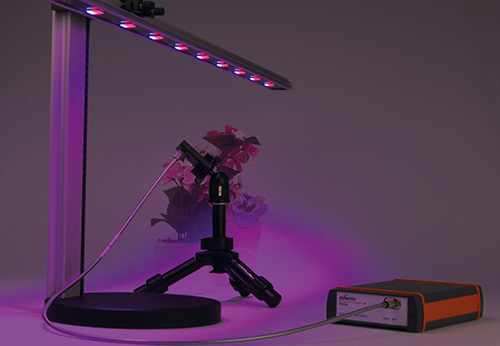
Spectrometers, such as those from Avantes, can be used to analyse the spectral output of horticultural lighting systems
Flash inspection
According to Langston, across the whole lighting industry – not just in horticulture – a shift has been occurring towards more capable tools for analysing light. ‘Typically, as LEDs have swept the world, because you’ve got different shapes, narrow-band illumination and sharper spectral peaks, the old tools don’t measure accurately anymore,’ he said. ‘This is what is driving the underlying need for more spectroscopy and spectrometer systems.’
Development is also being driven at a performance level by demand from manufacturers of LEDs, which use spectroscopy for quality control purposes in production lines, according to Langston. ‘We developed a custom design spectroscopy system for an LED manufacturer that wanted to be able to measure colour and colour temperature of LEDs very accurately, so that they could categorically bin them,’ he said. LEDs are often sorted by colour temperature when produced in large batches, and developments in spectroscopy are enabling this to be done at faster rates. ‘The customer came to us and said that because they had scaled their production, they needed to speed up the quality control process,’ Langston continued. ‘They needed a spectrometer that could measure very accurately and very quickly. We developed a special high-throughput design with very low stray light to achieve that.’
LEDs have been produced increasingly on an industrial scale for 10 to 15 years, according to Langston, and the high volumes and fast speeds of LED production lines therefore need correspondingly fast quality control systems in order to maintain uninterrupted operation. Each LED on the line will receive a short pulse of current as it passes in front of a spectrometer, causing it to light up, and in this short instance the system has to capture the emitted light and analyse it.
Avantes’ Loop has observed that, within industrial quality control, there has been a general transition away from using expensive, high-end spectroscopy systems towards the more affordable mid-range systems that have become available. ‘The mid-range systems are now the workhorses,’ he remarked. ‘High-end systems are often a little bit slower, while mid-range systems take the spectrum at a glance and require only a few milliseconds to perform a measurement, which makes them less accurate, but also quicker. These systems are therefore more suitable for production lines where speed is of great value.’
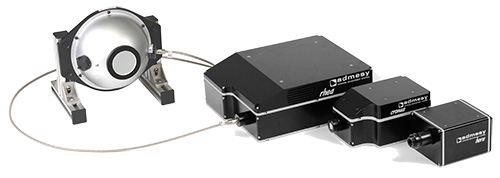
Admesy offers spectrometers for both high-speed industrial analysis and highly accurate research and development applications
Systems such as Avantes’ Ava-LED and Admesy’s mid-range Hera and Cronus spectrometers are examples of these workhorses for fast-paced quality control. ‘The Hera series is typically used in the visible range from 380-780nm, and is often used in production lines where medium to high luminance levels are measured in quick succession,’ explained Jeffrey Lemmens, Admesy’s sales and support engineer. ‘The Cronus spectrometer is similar to the Hera series, except that it also has a built-in tri-stimulus colourimeter, which is used to perform flicker measurements.’
Flicker is an issue that has existed in lighting since the 1980s, and is observable to the human eye at frequencies of approximately 50 to 70Hz at large enough modulation depths. ‘Above these frequencies, we can’t see it, but can still sense it, which can prove dangerous for people with certain medical conditions, such as epilepsy,’ commented Lemmens. ‘In workshops, if a saw is rotating at a certain frequency that happens to match the frequency of a flickering light, then it may look like the saw is stationary when really it’s rotating.’ Manufacturers therefore use spectrometers to ensure that LEDs comply to standards such as IEEE 1789, a recommendation introduced at the end of 2015 for modulating current in high-brightness LEDs to mitigate health risks.
According to Lemmens, the quick checks that are performed on production lines are made at one or two luminance levels, whereas the measurements made in research and development labs are very precise and are taken over a range of values. Admesy offers its Rhea spectrometer for these lab inspections – a more accurate, CCD sensor-equipped system with a larger dynamic range due to an integrated filter wheel. ‘The Rhea spectrometer is used when entirely new luminaires are being developed, for example if a manufacturer is about to make a new LED lamp and they need to check the spectral behaviour very accurately at both very low and high luminance levels,’ explained Lemmens. ‘If they are working with a sample of a WRGBW lamp – an RGB lamp with additional warm and cool white LEDs – they might want to tune it in a certain direction to cover certain colour points. These measurements have to be done with a very high precision, as this is an application where high-end spectral data is required.
‘We are definitely seeing a growth in the number of spectrometers that are sold for the purpose of LED inspection, especially as accurate and traceable spectrometers become more and more affordable for the smaller manufacturers and research and development labs who occasionally use a spectrometer,’ concluded Lemmens. ‘That’s a completely different shift from years and years ago, where spectrometers were very expensive and needed a lot of attention, in terms of calibration. Now these systems are offered at a lower price and are easier to use, while ensuring both the standard and quality.’

